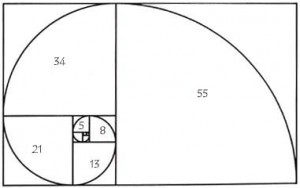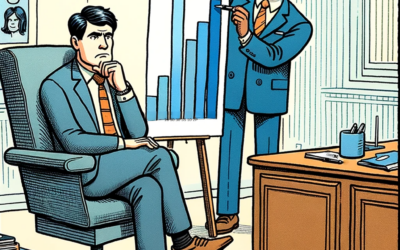Expertise in one field can often apply to other fields. In photography, I have been studying framing. Two very popular methods to frame a photograph are the rule of thirds and the golden ratio. For the rule of thirds, imagine the frame as two vertical and two horizontal lines each placed approximately 1/3 the way into the frame. Placing the major subject (a person’s face for example) at any intersection will be a start to an aesthetically pleasing photograph.
The golden ratio provides a similar, yet more complex, methodology to aesthetically frame a photograph. The golden ratio was discovered by mathematician Leonardo Fibonacci. Fibonacci published his number sequence (1, 1, 2, 3, 5, 8, 13, 21, 34, 55, 89 …) around the year 1202. If you divide the (n+1)th number in the series by the nth number in the series you get a ratio of 1:1.618. Here is a graphical representation of the Fibonacci Spiral. Notice how the spiral of the seeds in the sunflower flow in a similar pattern to the Fibonacci Spiral.
 Why are these frame methods important? My DSLR has 18 megapixels of data that it can capture. If I frame the scene, in the camera, using one of the two rules above then I can print the picture with all of the 18 megapixels intact. If, on the other hand, I have to crop the picture in Photoshop (because I was sloppy, lazy, or unaware) then I lose content–valuable content. I paid good money for a sharp lens and a great camera sensor, and I won’t be able to return to some of the places I’ve photographed. Other places won’t have the same lighting or conditions.
Why are these frame methods important? My DSLR has 18 megapixels of data that it can capture. If I frame the scene, in the camera, using one of the two rules above then I can print the picture with all of the 18 megapixels intact. If, on the other hand, I have to crop the picture in Photoshop (because I was sloppy, lazy, or unaware) then I lose content–valuable content. I paid good money for a sharp lens and a great camera sensor, and I won’t be able to return to some of the places I’ve photographed. Other places won’t have the same lighting or conditions.
So how does this apply to leadership? Simple. How do you frame your work so that your audience–team members, customers, service providers–doesn’t miss valuable content? How do you make the most important information the most visible and aesthetically pleasing? How can you avoid having to re-frame an argument later?




